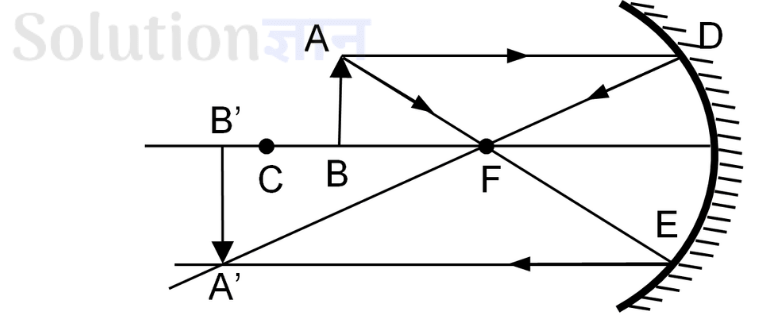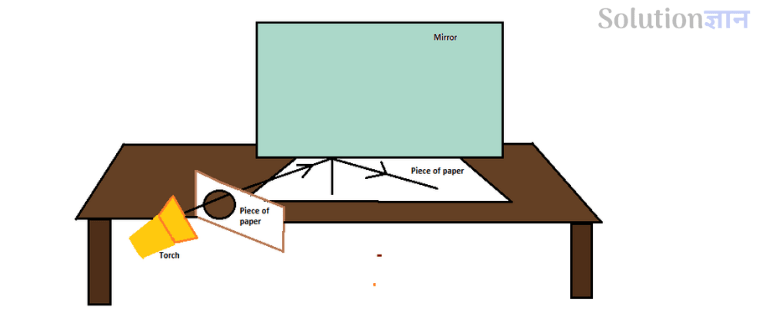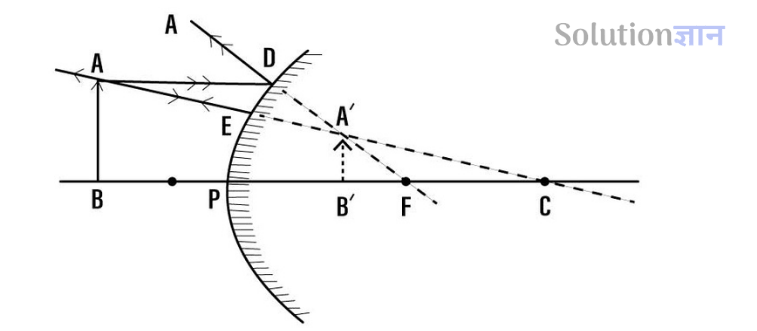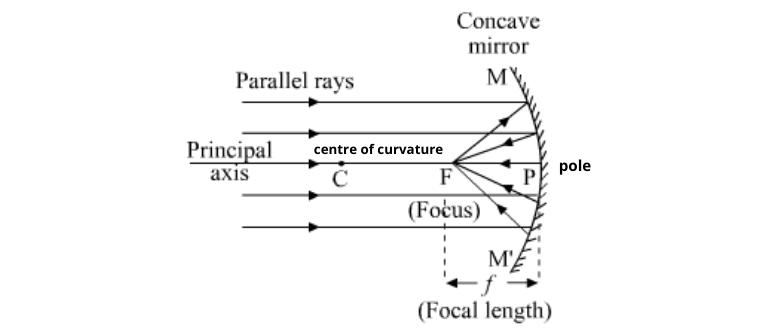If you are looking for the DAV Class 7 Science Chapter 12 Solutions Light then you are at right place. With the help of these solutions, you can easily grasp basic concepts better and faster. Moreover, it is a perfect guide to help you to score good marks in school examination.
DAV class 7 Science Book Chapter 12 Light Question Answer
DAV class 7 Science Book Chapter 12 Light Question Answer is given below. Here class 7 Science Question Answer is provided with great explanation.
Highlights
A. Fill in the blanks.
B. True or False.
C. Tick the correct option.
D. Answer the following questions in brief.
E. Answer the following questions.
A. Fill in the blanks.
1. An image, which can be obtained on a screen, is called a ___________ image.
2. The angle of reflection ___________ the angle of incidence.
3. The incident ray, the ___________ at the point of incidence and the reflected ray all lie in the same ___________.
4. The point, where a concave mirror forms the image of a very distant object, is known as the ___________ of the mirror.
5. A spherical mirror, that always forms a virtual, erect and diminished image of an object, is a ___________ mirror.
6. Eye specialists use ophthalmoscope, which is fitted with ___________ mirror.
Answer: (1) real (2) equals (3) normal, plane (4) focus (5) convex (6) concave
B. Write True or False for the following statements.
1. The image, formed by a plane mirror, shows the right side of the object as its right side and the left side of the object as its left side.
2. When we stand between a pair of parallel plane mirrors, we can see an infinite number of images.
3. A concave mirror can never form a virtual image of an object.
4. We can use either a concave mirror, or a convex mirror, as the ‘reflector’ in torches.
5. Motor vehicles generally use either a plane mirror, or a convex mirror, as their ‘rear view’ mirror.
Answer: (1) False (2) True (3) False (4) False (5) True
C. Tick the correct option.
Answer:
(1) normal at the point of incidence.
(2) just retraces the path.
(3) pole of the mirror.
(4) 4m
(5) 8m/s
D. Answer the following questions in brief.
1. Explain clearly the difference between a real image and a virtual image. Give one example of a virtual image.
Answer:
Real image
- It is formed by actual intersection of light rays.
- It can be obtained on a screen.
- It always forms in front of the mirror.
- It is inverted with respect to object.
Virtual image
- It is formed by the apparent intersection of light rays.
- It cannot be obtained on a screen.
- It always forms behind the mirror.
- It is always erect with respect to object.
Example of a virtual image is image of our face formed by plane mirror is virtual.
2. How does changing the distance of the object, from a convex mirror, affect the size and nature of the image formed by it?
Answer:
(1) The size of the image increases when an object moves towards the mirror.
(2) The size of the image decreases when an object moves away from the mirror.
(3) Nature of the image does not change in both the cases.
3. Draw a ray diagram to show the formation of an image when the object is placed between the C and F points of a concave mirror.

4. Where should we keep an object, in front of a concave mirror, so as to get a virtual and magnified image of it?
Answer: To get a virtual and magnified image, we should keep an object in front of a concave mirror between F and P.
5. The magnified image, of an object, appears to be formed, behind the mirror, by an apparent intersection of the reflected rays. What can you say about (a) nature of the image (b) the type of mirror used?
Answer: (a) Virtual image (b) Concave mirror
6. Rohit suggested to his father to fix a ‘security mirror’ which would provide them with a wider view of the surrounding of their shop. Name the type of mirror that Rohit must have suggested to his father. Also mention the basic characteristics of the image formed by this type of mirrors.
Answer:
Type of mirror – convex mirror
Characteristics of the image formed by this mirror are as following –
- Image is virtual, erect and diminished.
- Image is formed behind the mirror.
- The size of the image increases when we move object towards the mirror.
- The size of the image decreases when we move object away from the mirror.
7. State the type of mirror that the following items/objects would correspond to:
(a) inside of a stainless-steel bowl
(b) reflector of a torch
(c) a polished shining wooden surface
(d) the shiny outer surface of the bicycle bell.
Answer:
(a) Concave mirror
(b) Concave mirror
(c) Plane mirror
(d) Convex mirror
E. Answer the following questions.
1. State the laws of reflection. Describe an activity to show that incident ray, reflected ray and the normal, at the point of incidence, all lie in same plane.
Answer:
The laws of reflection are as follows:
- 1. The incident ray, the normal at the point of incidence and reflected ray, all lie in the same plane.
- 2. The angle of incidence, and the angle of reflection, are equal to each other.
Activity
Place a plane mirror on the table. Take a paper sheet and make a small hole in its center. Make sure that the light in the room is not bright. Hold the sheet normal to the table. Take another sheet and place it on the table in contact with the vertical mirror. Draw a normal line on the second sheet from the mirror.

Now, light a torch on the mirror through the small hole such that the ray of light falls on the normal at the bottom of the mirror. When the ray from this hole is incident on the mirror, it gets reflected in a certain direction. We can easily observe the incident ray, reflected ray and the normal to the mirror at the point of incidence on the sheet placed on the table. This shows that the incident ray, the reflected ray, and the normal to the surface at the point of Incidence all lie in the same plane.
2. Trace the path of reflected ray in the following ray diagrams.
Answer: Do yourself.
3. Draw a ray diagram to show the formation of the image of a point object by (i) a plane mirror and (ii) a convex mirror.
Answer: (1) For ray diagram see page no. 180 of your science book.
Answer: (2)

4. Three persons are standing at points P, Q and R in front of a plane mirror. Can ‘P’ see himself in the mirror? Also, can he see the image of Q and R in the mirror?
Answer: No, P can’t see image of himself but he can see image of Q and R.
5. With the help of a suitable diagram, explain the meaning of the following terms for a concave mirror.
(a) centre of curvature
(b) pole
(c) principal axis
(d) focus
Answer:

(a) Centre of curvature: It is the centre of the sphere of which the spherical mirror is a part.
(b) Pole: It is the central point of a spherical mirror.
(c) Principal axis: it is the line joining the pole of the mirror and its centre of curvature.
(d) Focus: The point, on the principal axis, where all the rays, incident parallel to the principal axis, actually meet, or appear to meet, after their reflection by the spherical mirror is called focus of that mirror.
6. What type of mirror is used in the following cases? Is the image formed virtual and erect in each case?
(a) ‘make up’ mirror
(b) ‘rear view’ mirror of vehicles
(c) reflecting type telescope
(d) shaving mirror
Answer:
(a) Plane mirror
(b) Convex mirror
(c) Curved mirror
(d) Plane mirror
No, image is not virtual and erect in each case.

so long answers
but nice website
Yes you are right
This is amazing website
Soooo long answer you have right the answer in small but thise website was very helpful for me
This website is amazing
So nice website ???? U should upload answers of English will be great ????
amazing
Extremely long answer. Too long to even try to remember.
So nice plz upload the answers of science value based too
Yes,The Image is virtual and erect in each case
This was answer.???? (My physics teacher told
But this site was amazing
I give 10 Stars ????????????????????????????????????????.
Good answer wow wow
Yes you all are right. This website is helpful for only DAV student’s.
Thanks ????
Iam using this website to do my physics/chemistry homework of chapter 12 Tysm solution gyan ☺️☺️
Very nice website pls also post DAV class 7 maths
Amazing just perfect
This is very nice app ????????
Thankyou so much.amazing answers
Very nice answers
Nice website
This is very nice app
I am a monitor of my class so i have to done all chapters first in my classs of all subject. You help me too much thanks a lot❤.
It helps alot.answers become very easy to learn